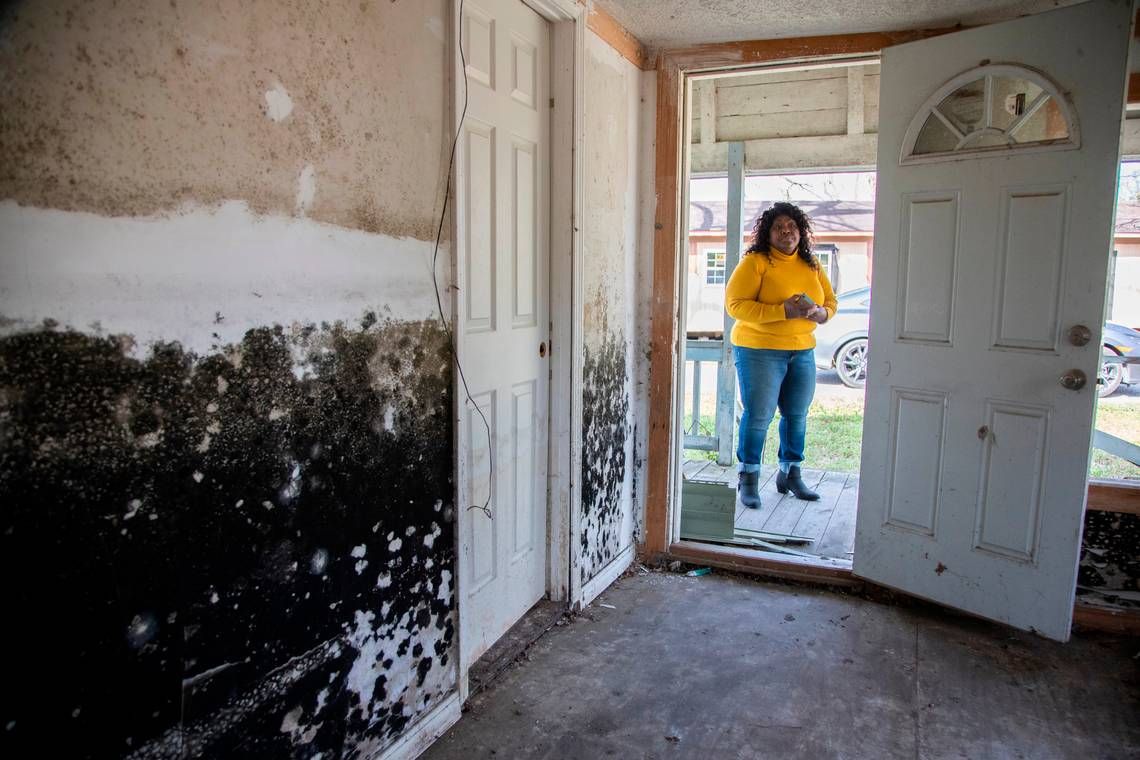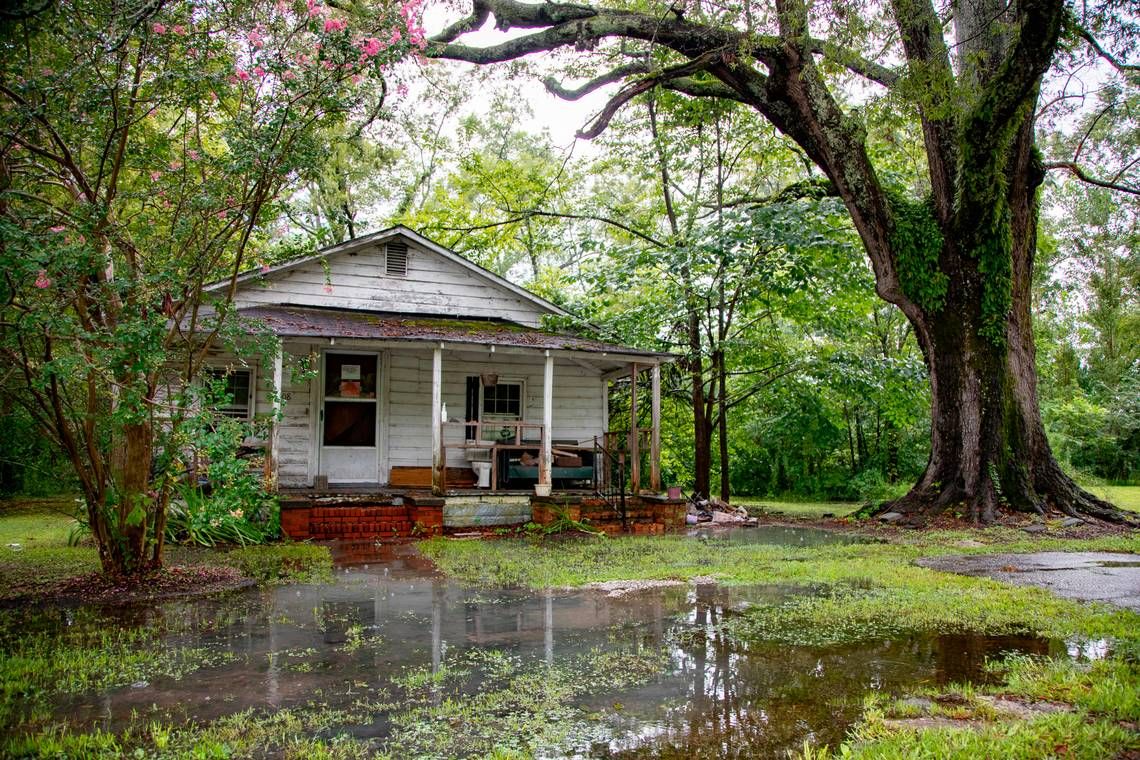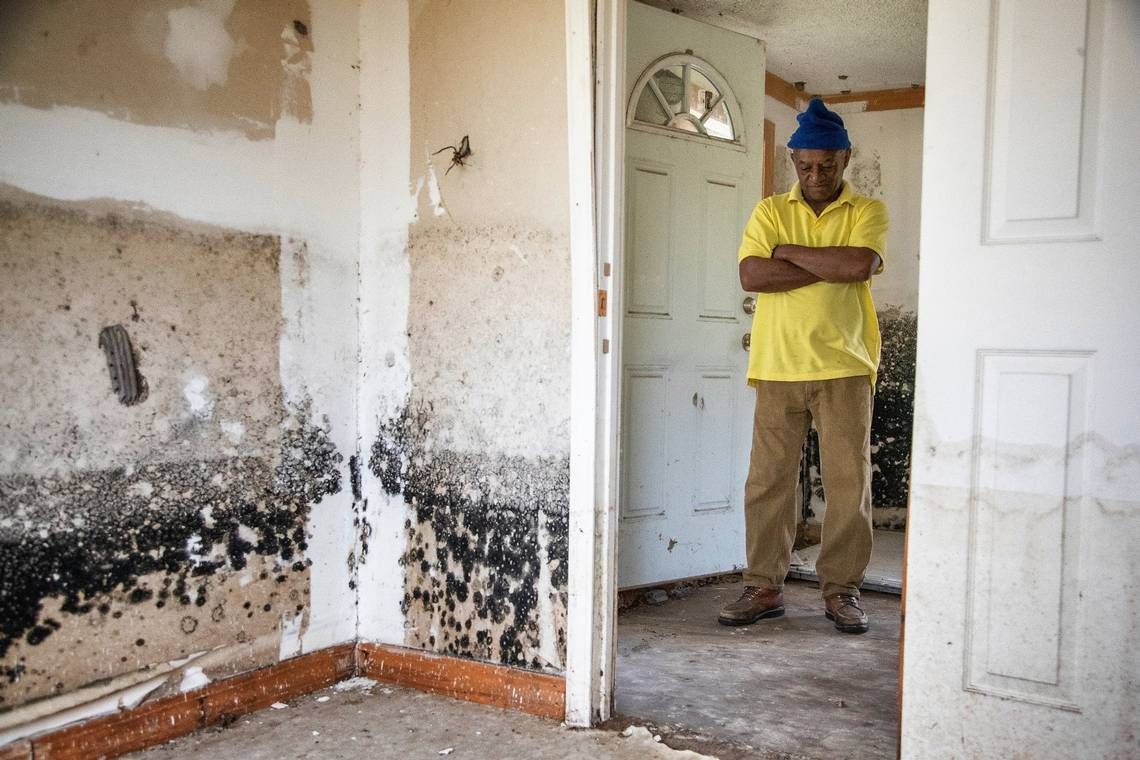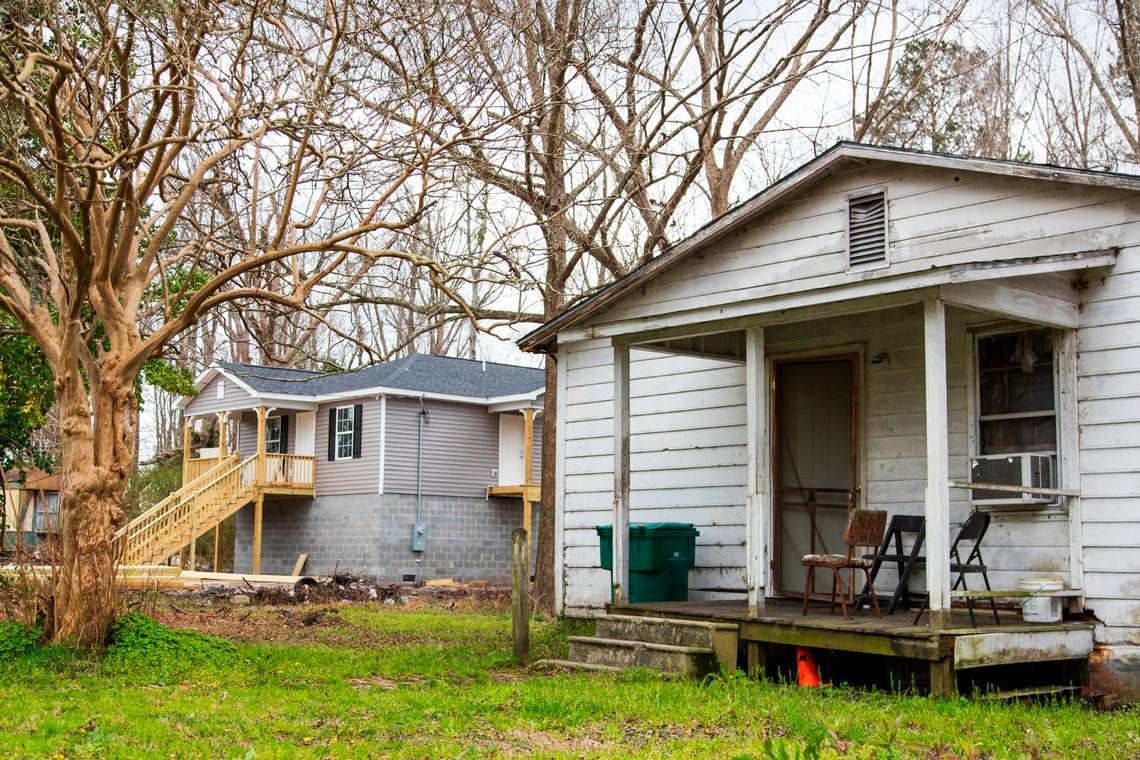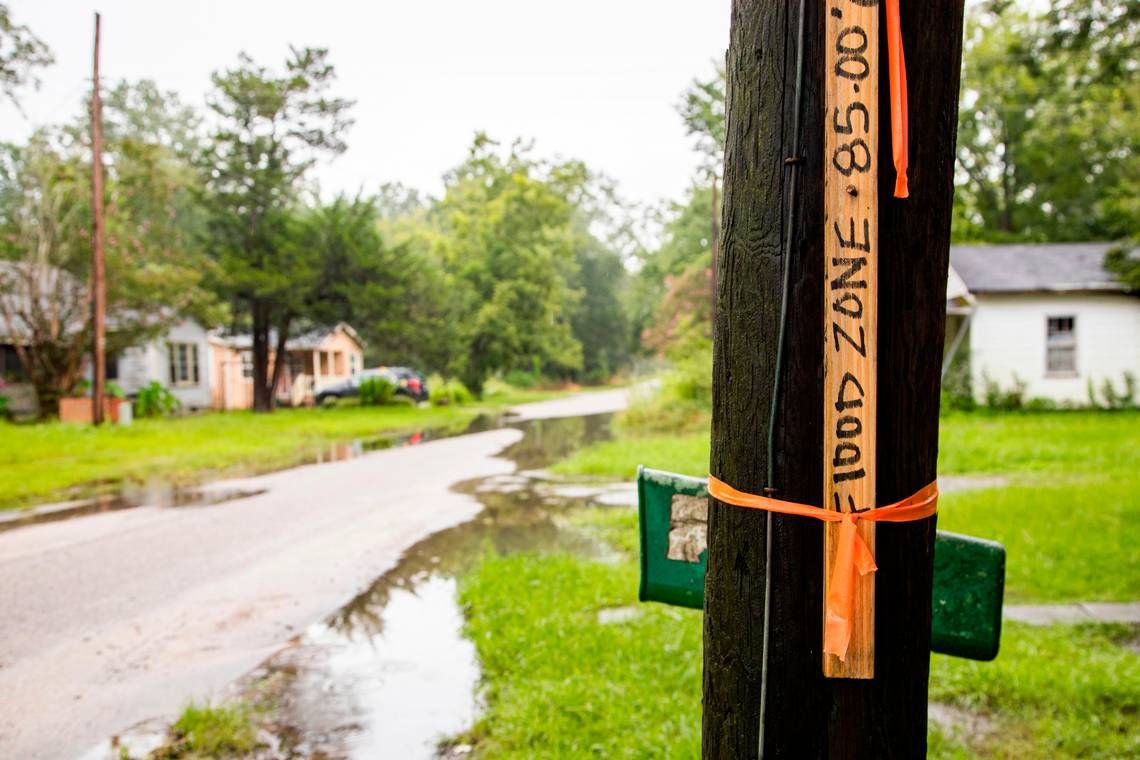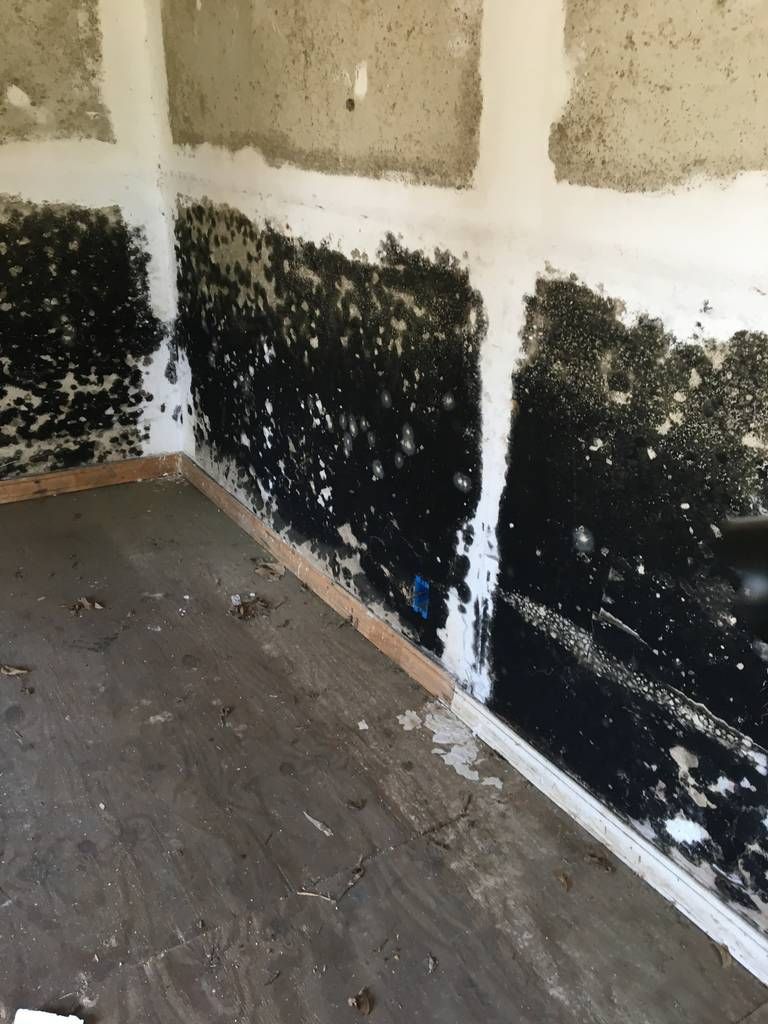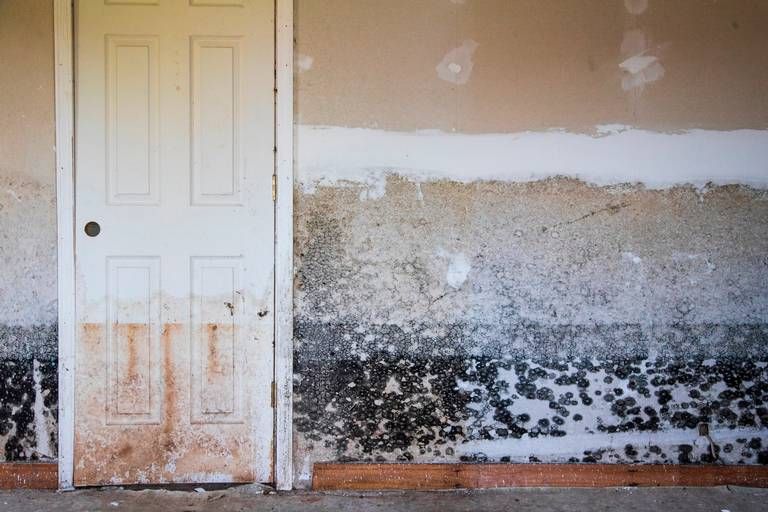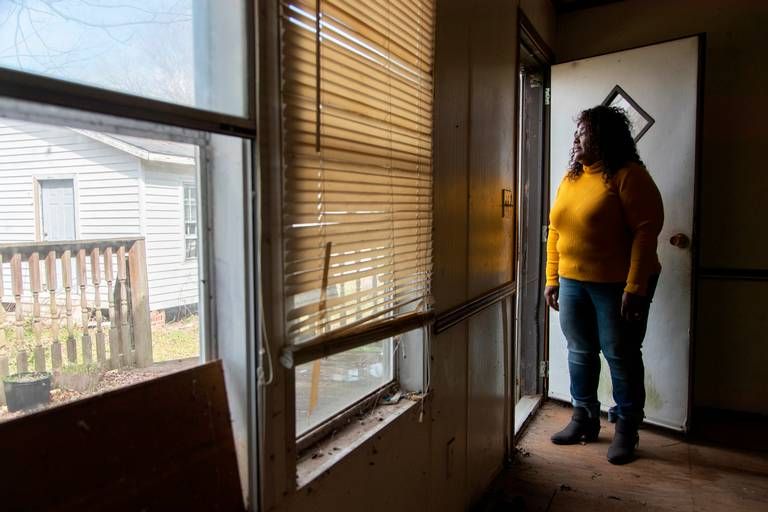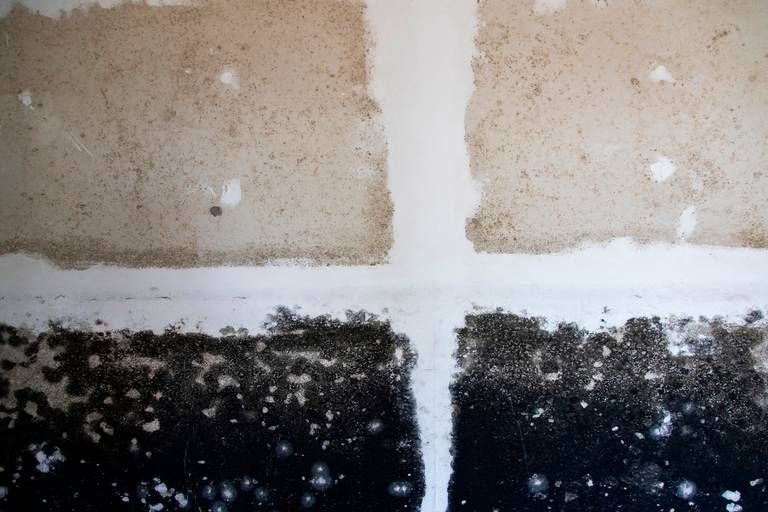In North and South Carolina, sea-level rise is most noticeable in counties along the coast, where beaches shrink, dunes disappear and homes crumble, but the effects of climate change reach well inland. “Beyond the Beach” is a seven-part series examining the health toll that climate change is already taking on the people who live and work in the Carolinas.
The project is a partnership of The News & Observer in Raleigh, North Carolina, The State in Columbia, South Carolina, Columbia Journalism School and the Center for Public Integrity. Funding support for “Beyond the Beach” came from the Pulitzer Center on Crisis Reporting. Columbia Journalism Investigations, an investigative reporting unit at the Columbia Journalism School, also contributed to the project. Funding for CJI comes from the school’s Investigative Reporting Resource and the Energy Foundation.
Almost every time Gwen Felton opened the door to her father’s mobile home, a blast of stinking, moldy air smacked her in the face.
Mold had spread across the floors, crept up the walls and darkened the window sills of her dad’s trailer after a series of hurricanes and floods began pounding Sellers five years ago. And as the fungus advanced, her father’s already fragile health seemed to get worse.
When her father died last January at age 76, Felton couldn’t help but wonder if mold had contributed to the variety of health problems that ultimately killed him. But Felton, a nurse for nearly 30 years, said others in this tiny community face similar threats.
“Sellers has a problem as far as mold, due to the rain and the conditions of the homes,’’ she said. “People have been there all their lives and they don’t know how to get help. They don’t have any other choice but to live there.’’
Similar troubles are occurring in other out-of-the-way communities across South Carolina, where storms and floods have been so severe since 2015 that people are suffering from exposure to mold. Each time powerful storms blow through, moisture rises beneath people’s homes — and so does the fungus that’s tied to an array of health ailments.
Allergies, coughing, wheezing, headaches and asthma are just a few of the problems linked to indoor mold exposure. For people who already have adverse health conditions, like Felton’s father, mold in their houses adds to the health threat. But others also can suffer, including children, researchers say.
The advance of mold, felt acutely in poor areas where people have little money to kill it, is a consequence of the earth’s changing climate, which scientists say has begun to cause heavier rains and flooding.
“Mold is generally caused by a combination of moisture and heat,’’ said Gina Solomon, a University of California-San Francisco professor who studied the explosion of mold that occurred in New Orleans after Hurricane Katrina 15 years ago.
“So the conditions that foster the growth of mold get worse in any part of the country facing this for longer parts of the year. Those things are much more likely with climate change. We are seeing the conditions mold loves, unfortunately, expanding.’’
Other communities where mold has been a problem in recent years include Nichols, a small town in South Carolina’s coastal plain and perhaps the poster child for repeat flooding since 2015.
Floods from swollen rivers have gotten so bad many people have abandoned Nichols. But some have tried to repair damaged and moldy homes, said Frank Oliver, a Marion County conservation group official familiar with Nichols.
Researchers at the University of South Carolina have found that substantial flooding is more than an inconvenience. It is making mold a growing threat along the East Coast and in the Palmetto State.
One 2020 study reported that mold began to sprout in houses in the northeastern United States in 2017 — five years after mold caused by Hurricane Sandy-related floods had been cleaned up.
The study, overseen by former USC professor Anindya Chanda, also discovered higher amounts of some molds inside a handful of flood-damaged homes in Columbia and Charleston than in homes that weren’t flooded.
Chanda, who has studied mold for 16 years, said the health-threatening fungus many people are dealing with may be a sign of future climate-related hazards.
“It is a huge threat,’’ he said. “I cannot emphasize that enough.’’
Chanda said he’s concerned that people who get sick from exposure to mold could become vulnerable to diseases like the coronavirus, which prey on those with weakened immune systems.
Sellers Mayor Barbara Hopkins knows about coronavirus. Hopkins said she recently suffered a bout with COVID-19 but has since recovered. While she thinks she will be fine, Hopkins worries about others in the town she supervises along the Marion-Dillon county line.
“Your lungs are already damaged from mold, from breathing that air every day,’’ she said. “When you get Covid, you aren’t going to be able to breathe.’’
Unfortunately, state and federal agencies don’t do much to protect people from mold that forms inside homes, some political leaders say.
The state and federal governments do not oversee mold in the air of homes to determine what is safe, unlike what they do with outdoor air pollution.
And while the Federal Emergency Management Agency has money available for disaster assistance after hurricanes, it does not provide individual disaster aid for people to clean up mold following big storms.
Rutgers University mold researcher Joan Bennett, a member of the prestigious National Academy of Sciences, said some interests have tried to downplay the hazards of mold, namely insurance companies concerned about payouts.
Mold affects people differently, but it’s a threat to many folks, she said.
“Lots of people can get really, really sick from mold exposure,’’ Bennett said. “And it can manifest itself in different ways.’’
Moldy Horrors
In the past five years, parts of South Carolina have experienced unusually heavy rainfalls — much of that tied to hurricanes — and each time, Sellers residents have cringed at the prospect of more flooding.
Sharon Miles, a town councilwoman in Sellers, is among those dealing with the reality of mold. The mother of a 3-year-old son, Miles spends one day a week cleaning parts of her mobile home that are most susceptible to mold.
If she stopped the cleansing, it wouldn’t take long for mold to form inside her home, said Miles, who worries that mold is growing in parts of the house she can’t see.
“The mold comes out of the woodwork,’’ she said. “Where you think the mold can’t grow, it grows. If there is a little crack, mold will grow. I think there is more mold in the house...to be honest. Once the moisture hits, the mold hits.’’
Miles said the mold problem is pretty easy to understand.
“It’s because of the moisture,’’ Miles said. “You can’t stop the rain.’’
Since 2015, Marion County, where Sellers is located, has experienced three of its wettest years in the past century, receiving anywhere from 10 inches to more than a foot of rain above normal, according to the National Weather Service.
Marion’s troubles result from visits by hurricanes Matthew and Florence in years after the 2015 flood that swamped South Carolina, a storm driven by Hurricane Joaquin offshore.
In 2016, Matthew dropped more than 15 inches on the county in a few days, flooding Sellers and nearby roads. All told that year, Marion County received more than 60 inches of rainfall.
Nearly the same amount fell on Marion County two years later, when Hurricane Florence arrived.
Now, eastern South Carolina, which includes Marion County, is on track for a record-breaking year of rainfall, statistics show. The eastern part of the state has had more than 54 inches of precipitation so far this year, surpassing the average rainfall for an entire year. The Pee Dee region of eastern South Carolina normally gets about 44 inches in a year, according to the S.C. Climatology Office.
“It’s been a significant stretch of heavy rainfall in the Pee Dee,’’ state climatologist Hope Mizzell said.
More intense hurricanes, fueled by warmer ocean waters, are an example of how climate change is threatening the planet, scientists say. But big storms aren’t confined to the beachfront. Many are smacking the Carolinas, hovering over inland areas and depositing buckets of rain.
That’s a problem for many communities on South Carolina’s interior coastal plain, including Sellers.
Strapped for cash and filled with poverty-stricken residents, Sellers sits in a naturally low-lying area where a canal and drainage ditches overflow during heavy rains. Many homes sit low to the ground, with little elevation, making it easy for flood waters to get inside and mold to form.
A drive through Sellers earlier this year revealed several blocks of abandoned homes. Mayor Hopkins escorted a reporter and a photographer from The State into some of the houses, pointing at moldy walls and floors.
One aging wood-frame home on Bank Street had a placard on it, saying it was structurally unsafe. A home on Burch Road showed evidence that fungus was eating through the floor.
Another home on Burch Road, where Hopkins’ brother once lived, had a black moldy fungus on the walls of most rooms. One wall inside the front door stood out. The wall contained growth so thick it resembled glossy black paint. Her brother discovered the problem when he pulled paneling down to look for the fungus, Hopkins said.
Hopkins’ brother, Raleigh Singletary, left the house after the 2015 flood because he found it hard to breathe in the moldy environment. It also was difficult and expensive to make home repairs.
Standing inside the doorway of the abandoned home earlier this year, Singletary frowned at the thought of living in a house with mold on the walls.
“The only thing I can say is it was terrible. Terrible,’’ Singletary said on a trip to check on the house. “I don’t like it.’’
Hopkins inspected a house that had not been abandoned, which belonged to Julius Lester. Lester had suffered for years from lung ailments and other health conditions.
When Hopkins opened the door, the smell of mold was evident in the air. The bottom of the wall in a room that contained a washing machine and a toilet had a coating of black growth.
Lester, 71, had been using a sofa in the living room as his sleeping quarters, rather than his bedroom, because mold was worse in the back of the house, Hopkins said. Lester wasn’t home the day The State’s journalists visited. He had gone to the hospital because “he couldn’t breathe. He was sick,’’ Hopkins said.
Six weeks later, Lester died in the hospital, leaving Hopkins and her mother, Gertrude Singletary, to wonder if mold had contributed to his lung illnesses, and ultimately his death. Singletary raised Lester after his mother died when he was a child.
“He would say ‘Aunt Gert, I believe that this is the mold,’ ’’ Gertrude Singletary, 92, said. “But I said, ‘Honey, I don’t know.’ I tried to clean. I tried to do all I could.’’
Felton, the veteran nurse whose father died last January, said it was evident to her that mold contributed to his health problems.
In poor health because of diabetes and kidney disease, her father, a popular local resident named Little Neal Felton, had left his home in 2019 to live with a son. Over the next three months, the elder Felton’s health improved, she said.
But he missed his home and insisted on moving back — and that was a mistake, Gwen Felton said.
After returning to his trailer, “you started seeing the same thing as before,’’ she said. “He was going down, he was frail looking. His eyes looked weak and red.’’
Plight of the Poor
Resolving mold problems can be an expensive task.
Cleaning up mold-infested homes often requires tearing out sheet rock and other materials that soak up water and foster the growth of the fungus. But mold cleanups can cost $5,000 to $20,000, depending on the severity of the problem, according to testimony given to a state mold committee last year.
That’s hard for people to pay for in Sellers, one of the least fortunate communities in one of South Carolina’s poorer counties.
Marion County, with a population of 31,000, has a median household income of $33,000, roughly half as much as the national average and about $18,000 less than the median state household income, according to the Census. The county has a poverty rate of 25 percent, compared to the state poverty rate of 14 percent and the national rate of 10.5 percent. The county is 57 percent Black; Sellers is 80 percent Black.
Unfortunately, people in disadvantaged communities don’t have much choice but to stay in their homes, regardless of the mold threat, Bennett said.
“As with everything else, poor people have it worse,’’ Bennett said. Some “already have a bad diet, bad housing and no health insurance. And then they’ve got a moldy house and they have to live there.’’
In Sellers, a few people have received federal grants to rebuild and repair their homes, including one property owner on Bank Street whose house has elevated above the soggy ground, Marion County officials said.
But that house stands in stark contrast to the abandoned houses just down the street. It’s unclear why more people haven’t received federal aid.
Marion County officials say more people could have taken advantage of federal programs that would help them rebuild and elevate homes. The county had several town meetings in Sellers to help explain how people could get aid, said Jimmy Brown, a county building official.
One of the problems in Sellers is that people aren’t equipped to maneuver through the maze of paperwork needed to get government aid — when it’s available, Hopkins said. Many people in Sellers, for instance, don’t have computers or access to the internet, she said.
Brown acknowledged there are limits on what can be done to help Sellers. Brown and Hopkins said a complicating factor in receiving an array of government help is that some people can’t show clear titles to the homes they’ve been living in.
These homes, known as “heirs property,’’ are houses passed down by generations of family members. But there is no clear property owner, even though people have lived in the houses their entire lives and paid taxes on them.
As a result, FEMA is reluctant to provide money to help repair homes after hurricanes for people who can’t show a clear title. FEMA also does not often provide money to clean up mold in storm-damaged homes.
“Because mold removal is considered mitigation, FEMA individual assistance does not provide money to individuals for mold removal,’’ according to an email from Danon Lucas, a FEMA spokesman in Atlanta.
Lucas said charitable organizations will help communities that can’t get federal money.
Among those is the United Methodist Church in South Carolina. Church members spent about $50,000 repairing more than two dozen homes in Sellers after Hurricane Matthew. The work included patching holes in roofs and fixing floors. They also sprayed for mold after Hurricane Matthew, a year after heavy rains soaked the town in 2015.
The effort provided relief for the community that residents appreciated. Still, many repairs were only basic improvements on aging homes that sit at ground level. New or elevated homes need to be built to keep people dry — and mold free, said Matt Brodie, who oversaw much of the work for the church.
Many Sellers residents don’t have the money to make additional repairs and improvements.
“Unfortunately, because of the economic situation of folks who live in Sellers, anything we did was more of a Band-aid than it was a fix,’’ Brodie said. “They are not in a position where they can really financially take the next steps.’’
State Rep. Roger Kirby, D-Florence, said communities like Sellers need more attention from state and federal governments. Kirby served on a state mold study committee last year that recommended South Carolina begin programs to better educate people about the hazards of mold.
After hearing from a state Department of Insurance official that many policies do not cover mold repairs, committee member John Scott, a Democratic state senator from Columbia, said that needs to change. Mold damage from floods isn’t the fault of the homeowner, he said.
Mold that forms as a result of a storm “doesn’t mean that the property owner is creating the problem,’’ he said during a meeting last year in Columbia. “It means that the change in the environment is something they couldn’t see.’’
Sellers resident Charis Wilson, 56, was affected by a change in the environment. Wilson lived in a moldy home after it flooded in 2016. But she finally moved out.
“You could smell the mold,’’ she said, recalling the fungus in her former home. “I haven’t been back.’’
Wilson now rents a house around the corner from the flood-damaged home.
Sitting on the porch of the house she is staying in on Main Street, Wilson said she hopes the floods that have smacked Sellers so hard will one day be a thing of the past. Life hasn’t been the same for Sellers since storms and flooding began rolling in five years ago.
“It’s climate change, it sure is,’’ she said.
This story is part of the Pulitzer Center’s nationwide Connected Coastlines reporting initiative. For more information, go to pulitzercenter.org/connected-coastlines.
